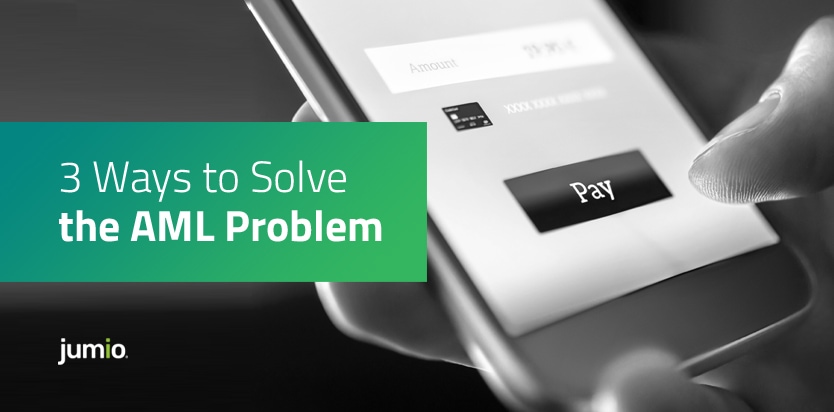
Anti-money laundering (AML) requirements vary across the globe. They are strongly characterized by specific legislation in various countries and can differ by industry and time period as well. It’s a dynamic environment that may require solutions of different complexity levels.
For example:
-
- A cryptocurrency startup in California may need a simple, entry-level solution to support applicable AML regulations with a single part-time AML analyst.
- A fintech that operates as a money transmitter with licenses across multiple U.S. states may need to tackle a higher level of AML complexity with a lean team of AML operations.
- A multinational financial corporation may need to abide by even more complex international legislation scenarios with huge internal AML teams and armies of external consultants.
Digital Trust Throughout the Customer Journey
How to Leverage the Jumio Platform from Onboarding to Ongoing Monitoring
In order to address this diversity of needs, there are three levels of different solutions that can be considered to solve the AML problem.
1. Entry-level AML solutions
Transactions are monitored with simplistic rules, and the system creates cases to document them. If required, these solutions also enable the ability to file a report with the financial authorities. The report contains a basic audit trail but does not show changes to rules over time.
The benefits of these solutions are mostly focused on lower cost: they provide a light and quick setup. These simple solutions are relatively easy to manage by writing rules with a “no-code” or “low-code” approach and provide nice user interfaces and dashboards.
The main problem with these types of solutions is that even if they fulfill the entry-level local AML requirements in the short term, they are not scalable in the longer run. As soon as the company grows in terms of users and geographic locations, their AML program will require more complex management systems that are not compatible with the bare-bones initial solution.
2. Optimized AML solutions
These solutions are focused on streamlined usability but also add powerful tools and a strong grade of flexibility to enable company growth. Here are some examples:
(a) Audit trail of rules: The AML landscape is dynamic; regulations change constantly and thus rules may need to be updated depending on different times of introduction in different local markets. It’s critical in this case to provide the capability to trace these changes. This provides regulators with the extra time dimension on who, why and when the rules have been updated. This audit trail supports the evolving needs of the business and at the same time keeps employees accountable in the eyes of the regulators.
(b) Data explorer: Besides monitoring the transactions and creating alerts and cases based on rules, it’s critical to be able to view the collected data in a holistic way. Optimized AML solutions provide a data explorer that allows the AML analyst to look beyond the case and investigate/compare other data that might be relevant. A data explorer lets you search the AML database based on customers, transactions, accounts, payment methods and cases. For example, you could quickly filter the database based on a customer name to see if there are other cases for the same person and identify what types of transactions appear across the cases. This feature enables the AML analyst to drill down into cases and investigations quickly, within the same software platform environment. In this way, after filtering and sorting through the information, an analyst can add relevant transactions to a case to enable a more holistic view of the suspicious customer activity and yield a more effective investigation. Some transactions by themselves may not meet the criteria of a rule, but seen in context with other activities and data they could be a signal of more sophisticated money-laundering attempts.
(c) Full scalability: An optimized AML solution must be “bank ready,” extremely flexible and scale with the growth objectives of the customer. In this case, the AML platform could be fully integrated with Know Your Customer (KYC), biometric authentication, document verification and related capabilities on a global scale. The solution should be able to future-proof your AML program by running perfectly even with 500% growth in 1-2 years, for example, and scale to accommodate growing compliance teams.
3. Legacy, large-scale AML solutions
Some software platforms have been addressing AML since its inception more than 20 years ago. Most of these reflect the software architecture based on the early internet: they require on-premises management through IT teams, focus on supporting big teams of analysts and may involve armies of consultants. Once launched, these solutions tend to be very stable and reliable for the long term, but they are much more expensive and do not scale down easily to support small or mid-size financial institutions.
Jumio provides an optimized AML platform. It can address small, mid-scale and large-scale financial institutions with modularized product features and price points. Our solution can be purchased as an emerging, express or enterprise package depending on your organization’s needs. Each package is fully AML compliant and scalable, meeting regulatory requirements and providing additional useful features such as a complete audit trail of changes to rules, a powerful data explorer and full scalability through seamless integration with the Jumio Platform.
To find out more about how Jumio AML Solutions can successfully support your organization in the growth and corresponding scaling of your AML operations, please contact us.

